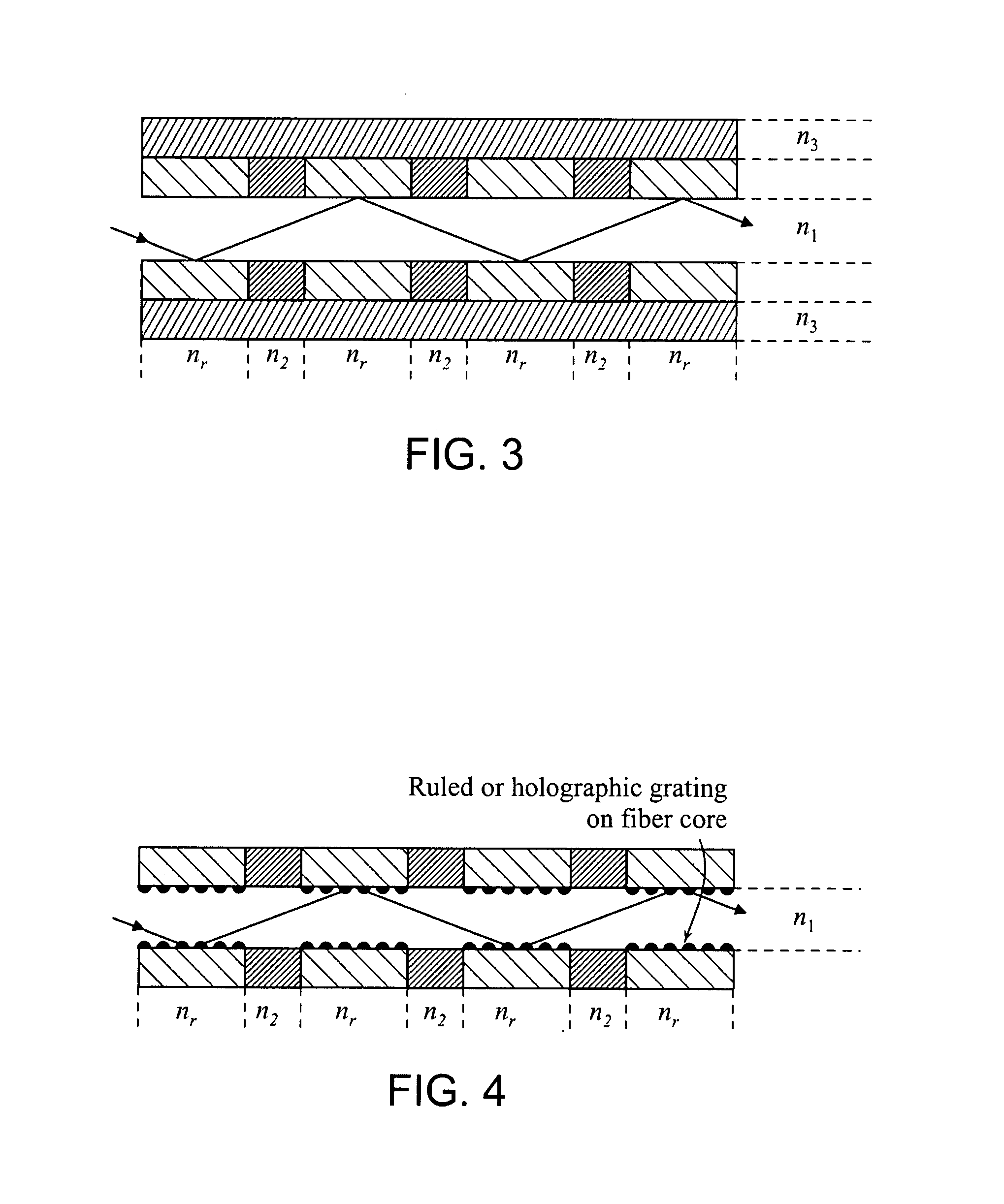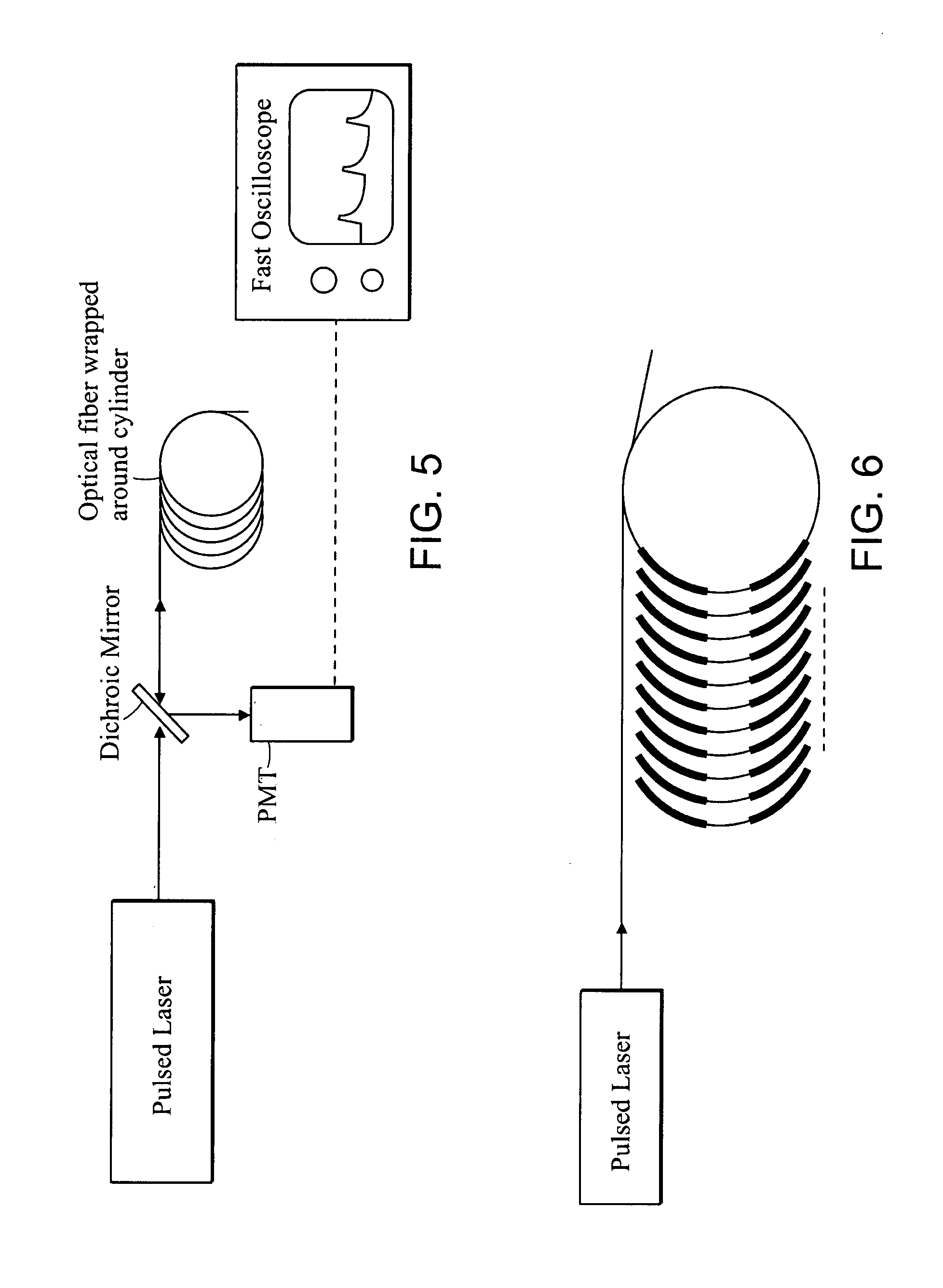One-dimensional arrays on optical fibers
a technology of optical fibers and arrays, applied in the field of one-dimensional arrays on optical fibers, can solve the problems of synthesis and analysis of an entire library, which may contain millions of compounds, and the cost and cost of reading a chip is beyond what can reasonably be used in a doctor's office, and the cost and complexity of reading a chip are increasing time-consuming and cost-intensiv
- Summary
- Abstract
- Description
- Claims
- Application Information
AI Technical Summary
Benefits of technology
Problems solved by technology
Method used
Image
Examples
example 1
Scheme
[0074]An experimental setup using the two fiber scheme as described supra is shown in FIG. 17. Two optical fibers were provided—a detection fiber, which is coiled around a cylinder, and an excitation fiber. Both fibers were multimode with 400 μm diameter silica cores (3M / Thorlabs FT-400-UMT). The TECS cladding was removed with acetone at certain regions along the fiber. The coiled detection fiber was stripped of the buffer and the cladding for a length of about 1 cm every 3.26 m. The separation of 3.26 m between adjacent regions was chosen such that the exposed core regions could be lined up parallel to the axis of the cylinder. The excitation fiber, whose buffer and cladding were also removed, was brought into direct contact with all of the exposed cores of the detection fiber. A total of six fiber-fiber connections were created.
[0075]Solutions of fluorophores were put on the fiber-fiber contacts. The regions were coated as follows:
[0076]Region 1 was coated with paraffin wax....
PUM
| Property | Measurement | Unit |
|---|---|---|
| fluorescence lifetimes | aaaaa | aaaaa |
| length | aaaaa | aaaaa |
| diameter | aaaaa | aaaaa |
Abstract
Description
Claims
Application Information
 Login to View More
Login to View More - R&D
- Intellectual Property
- Life Sciences
- Materials
- Tech Scout
- Unparalleled Data Quality
- Higher Quality Content
- 60% Fewer Hallucinations
Browse by: Latest US Patents, China's latest patents, Technical Efficacy Thesaurus, Application Domain, Technology Topic, Popular Technical Reports.
© 2025 PatSnap. All rights reserved.Legal|Privacy policy|Modern Slavery Act Transparency Statement|Sitemap|About US| Contact US: help@patsnap.com



